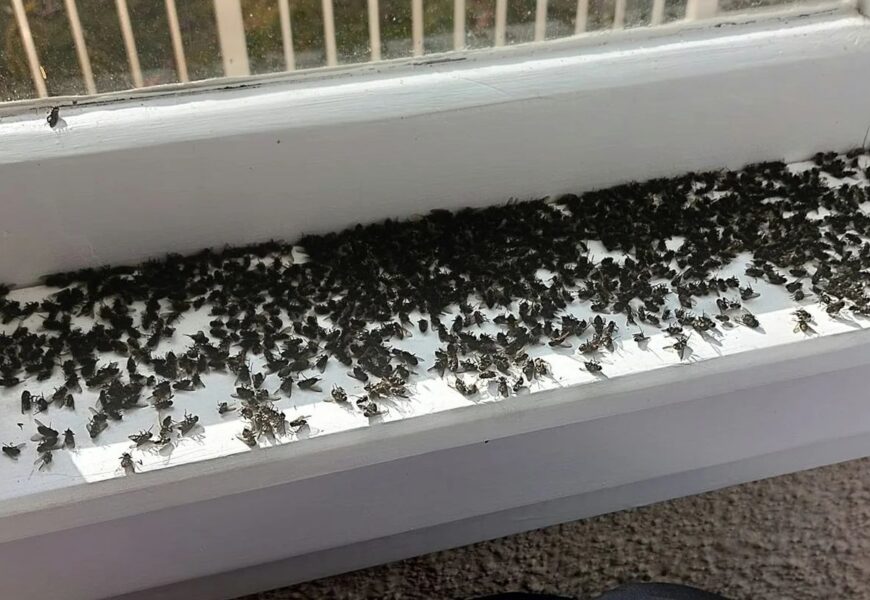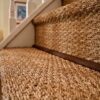Introduction
If you’ve noticed an lots of flies in house suddenly, you’re not alone. The presence of lots of flies in house suddenly can be both frustrating and unsettling. Whether you’re dealing with house flies, fruit flies, or other types, understanding the cause and how to handle it is crucial. In this article, we’ll explore practical tips to help you get rid of the infestation and prevent future fly problems. Keep reading to learn effective strategies that will restore comfort to your living space.
Types of Flies Commonly Found in Homes
Different types of flies are commonly found in homes, each with distinct behaviors and habitats. Identifying the type of fly can help in effectively managing and eliminating them.
- House Flies: The most common type, known for their grayish color and short lifespan. They are attracted to food and waste.
- Fruit Flies: Small, reddish-brown flies that are drawn to fermenting fruits, vegetables, and sugary substances.
- Drain Flies: Also called moth flies, they are found near drains, sewage, and moist areas, where they breed in organic matter.
- Cluster Flies: Larger flies that gather in clusters, typically during colder months, seeking warmth indoors.
- Blow Flies: Metallic-colored flies that are attracted to decaying meat or carcasses, laying eggs in rotting organic matter.
What Causes a Sudden Fly Infestation?
A sudden fly infestation can be triggered by several factors that create an ideal environment for breeding. The most common causes include:
- Rapid Reproduction: Flies breed quickly, causing a population explosion in a short period.
- Attracting Factors: Decaying organic matter, food scraps, and moisture provide a perfect breeding ground.
- Warm Temperatures: Flies are attracted to warm, humid eco environments, making indoor spaces ideal during certain seasons.
The Life Cycle of a Fly and How It Affects Infestation
Understanding the life cycle of a fly is crucial in controlling an infestation. Flies go through four main stages: egg, larva (maggot), pupa, and adult. Here’s how the process works:
- Egg Stage: A female fly lays hundreds of eggs in decaying organic matter, garbage, or food scraps. The eggs hatch within 24 hours into larvae.
- Larva Stage (Maggots): The larvae feed on the decaying material, growing rapidly over a few days. This stage can last anywhere from 3 to 7 days.
- Pupa Stage: Once fully grown, the larvae transform into pupae. This stage can last from several days to a couple of weeks, depending on the environment.
- Adult Stage: The adult fly emerges from the pupa, ready to reproduce. With a short lifespan of about 2 to 4 weeks, flies can breed quickly, perpetuating the infestation.
Identifying Potential Breeding Grounds
Flies are drawn to specific areas that provide optimal conditions for laying eggs. Identifying and addressing these breeding grounds is key to controlling an infestation. Common breeding grounds include:
- Food Sources: Leftover food, spills, and improperly stored groceries can attract flies. Particularly sugary and fermenting foods, such as fruits, juices, or rotting leftovers, are prime spots for egg-laying.
- Moisture and Organic Decay: Flies are also attracted to moist, decaying organic matter like garbage, compost bins, and dirty drains. These areas provide larvae with the necessary nutrients to grow.
- Hidden Areas: Flies may also breed in less obvious spots such as behind appliances, under sinks, or in bathroom drains where moisture accumulates and organic matter may decay unnoticed.
Common Areas Where Flies Breed in Your Home
Flies tend to breed in areas that offer food, moisture, and warmth. Common places to check include:
- Kitchen: Leftover food, spills, and trash cans are attractive to flies.
- Bathroom: Moisture-rich environments, especially drains and under sinks, provide a breeding ground.
- Garbage and Compost: These areas often have decaying organic matter, ideal for fly larvae to thrive.
- Basements and Attics: Hidden corners with accumulated organic material can also become breeding spots for flies.
DIY Remedies to Get Rid of Flies
There are several effective DIY methods to reduce and eliminate flies from your home. Simple remedies include:
- Fly Traps: Homemade traps using a mixture of apple cider vinegar and dish soap can attract and trap flies.
- Essential Oils: Oils like eucalyptus, peppermint, and citronella act as natural repellents when diffused or sprayed around the home.
- Fly Paper: Sticky fly strips can capture adult flies and help reduce their numbers.
- Herbal Solutions: Placing fresh basil, bay leaves, or lavender in fly-prone areas can deter them naturally.
The Role of Cleaning in Fly Control
Maintaining a clean environment is essential for controlling fly infestations. Flies are attracted to food particles, moisture, and organic decay, so regular cleaning helps eliminate these attractants. Key cleaning practices include:
- Wiping Down Surfaces: Regularly clean countertops, tables, and floors to remove food crumbs and spills.
- Emptying Trash Cans: Ensure garbage is disposed of promptly and bins are washed to prevent odors.
- Cleaning Drains: Clear drains of debris and organic buildup, which can serve as breeding grounds for flies.
Sealing Off Entry Points: Windows and Doors
Preventing flies from entering your home interior is crucial in controlling an infestation. Flies can easily find their way indoors through small gaps and cracks. To seal off entry points, consider these steps:
- Install Screens: Ensure that windows and doors are fitted with tight-fitting screens to prevent flies from entering while allowing fresh air.
- Seal Cracks and Gaps: Inspect doors, windows, and walls for any cracks or gaps, and use caulk or weatherstripping to seal them.
- Close Doors and Windows: Keep doors and windows closed, especially during peak fly activity times, like in the evening or during warmer months.
Proper Food Storage and Waste Management
Proper food storage and waste management are vital in preventing fly infestations. Flies are attracted to exposed food and organic waste, so following these practices can help keep them at bay:
- Store Food Properly: Keep food sealed in airtight containers, especially fruits, vegetables, and leftovers, to prevent flies from being attracted to them.
- Dispose of Waste Regularly: Empty trash bins frequently and ensure that food waste is securely sealed in bags before disposal.
- Compost Management: If composting, make sure it’s kept in a sealed bin, as decaying food can attract flies.
Maintaining a Fly-Free Home: Tips for Ongoing Prevention
Keeping your home fly-free requires consistent effort and preventative measures. By adopting a few simple habits, you can ensure long-term fly control:
- Regular Cleaning: Keep surfaces clean and free of food remnants, especially in the kitchen and dining areas.
- Maintenance of Fly Repellents: Use natural repellents, such as essential oils or fly traps, regularly to deter flies from returning.
- Monitor High-Risk Areas: Keep an eye on common breeding grounds like drains, trash cans, and compost bins, cleaning them frequently.
Why Flies Are Attracted to Your Home
Flies are attracted to homes primarily due to the availability of food, moisture, and warmth. Several factors make your home a desirable location for flies:
- Food Sources: Flies are drawn to exposed food, food waste, and sugary substances like fruits or drinks.
- Moisture: Flies seek out damp environments like drains, bathrooms, and kitchens, where they can find moisture to survive and breed.
- Warm Temperatures: Flies thrive in warm indoor environments, particularly during the spring and summer months when food sources are abundant.
Why Flies May Return After Initial Removal
Even after an initial cleanup, flies can return if the underlying conditions aren’t addressed. The rapid reproductive cycle of flies means they can quickly breed in hidden areas. Key reasons for their return include:
- Residual Breeding Grounds: If breeding sites like decaying food or moisture-laden areas aren’t thoroughly cleaned, flies may lay new eggs.
- Warm Conditions: Flies are attracted to warmth, and if the environment remains inviting, they can keep returning, especially during seasonal changes.
- Unsealed Entry Points: If entry points like cracks in windows or doors remain open, new flies can enter and restart the cycle.
When to Seek Professional Help for a Fly Infestation
If you’ve tried DIY methods and the fly problem persists or worsens, it may be time to seek professional help. Persistent infestations could indicate a larger issue, such as hidden breeding grounds or a more severe infestation. Key signs include:
- Large Numbers of Flies: An overwhelming presence of flies despite attempts at control suggests a serious problem.
- Breeding in Difficult Areas: If flies are breeding in hard-to-reach spaces, like inside walls or ventilation systems, professional pest control may be necessary.
- Recurrent Infestations: Continuous fly problems despite cleaning and preventive measures may require expert intervention to identify and address the root cause.
How to Prevent Future Fly Infestations
Preventing future fly infestations requires ongoing vigilance and proactive measures. To ensure your home remains fly-free:
- Regularly Inspect and Clean: Perform regular checks for food debris, stagnant water, and hidden breeding sites, particularly in kitchens, bathrooms, and garbage areas.
- Seal Entry Points: Make sure windows and doors are tightly sealed, and repair any cracks or gaps in the home’s exterior to block fly entry.
- Use Natural Repellents: Continue using natural repellents like essential oils, fly traps, or herbs to deter flies from entering or settling in your home.
Conclusion
In conclusion, dealing with lots of flies in house suddenly doesn’t have to be a source of stress. By understanding the causes, implementing cleaning habits, sealing entry points, and eliminating potential breeding sites, you can significantly reduce the fly population in your home. Regular maintenance and preventive measures, such as proper food storage and quick action on any organic decay, can help keep these pests at bay. If the infestation continues despite your efforts, professional pest control might be the most effective solution. Stay proactive, and your home will stay fresh and fly-free.
FAQs
1. Why are there so lots of flies in house suddenly?
Flies can suddenly appear in your home due to breeding grounds, such as decaying food, garbage, or moisture. Warm weather also accelerates their reproduction.
2. How do I get rid of flies in my house?
To get rid of flies, keep your home clean, remove food sources, seal any cracks or gaps, and use fly traps or natural repellents like vinegar or essential oils.
3. What causes a fly infestation?
Fly infestations are usually caused by easily accessible food, waste, or organic decay. They breed quickly and are attracted to areas with warmth and moisture.
4. Are there natural ways to keep flies away?
Yes! You can use natural remedies like placing basil, mint, or lavender around your home, using essential oils like eucalyptus or citronella, or setting up vinegar traps.
5. How can I prevent flies from coming back?
To prevent flies from returning, ensure your house is clean, store food properly, seal any entry points, and dispose of garbage regularly. Regular maintenance is key.















